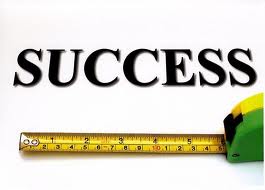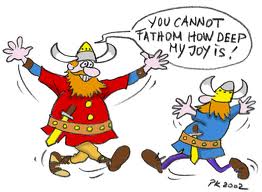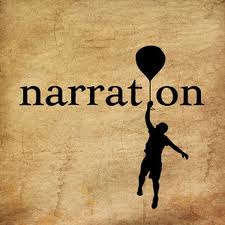 Welcome to O.D. Fridays at DonorDreams blog. Every Friday for the foreseeable future we will be looking more closely at a recent post from John Greco’s blog called “johnponders ~ about life at work, mostly” and applying his organizational development messages to the non-profit community.
Welcome to O.D. Fridays at DonorDreams blog. Every Friday for the foreseeable future we will be looking more closely at a recent post from John Greco’s blog called “johnponders ~ about life at work, mostly” and applying his organizational development messages to the non-profit community.
Today, we’re focusing on a post that John titled “How Much Do I Love Thee?“. In that post, he talks about the recent obsession in the workplace to measure EVERYTHING (e.g. SMART goals, Management by Objectives, etc) and pushes back on the idea that everything must be quantifiable. He starts his post with the following quotation from Albert Einstein:
“Not everything that can be counted counts, and not everything that counts can be counted.”
Every non-profit professional in the world knows that our sector is under extreme pressure to conform to the trends that John references in his blog post. Here are just a few examples:
- measuring community impact,
- program outcomes measurement,
- employee performance (e.g. management by objective), and
- measuring donor loyalty.
 Neither John nor I (or Einstein) are saying that we must fight this trend; however, there are things that are not measurable that must be considered and brought in the equation.
Neither John nor I (or Einstein) are saying that we must fight this trend; however, there are things that are not measurable that must be considered and brought in the equation.
More concerning to me is the impact that this trend seemingly has on fundraising practices. Specifically, I’ve heard more and more fundraising professionals talking about program outcomes and how it can be used to demonstrate “return on investment”.
Speaking as a donor, I love hearing that my local Boys & Girls Club’s homework assistance program resulted in 75% of kids either maintaining or improving their grades. However, I really want to hear the personal stories about little Jack and Jane; Jose and Irma; or LaShaunda and Xavier. There is something inspirational in those stories. More importantly, it helps me understand the impact of that program.
I think the Center of NonProfit Excellence stated it best in their marketing for a 2010 training titled “Narrative Philanthropy: Stories that Result in Gifts”:
“But the pendulum may have swung as far as it can in the direction of statistics and outcomes. Accountability is crucial, but cannot account for the fact of why people give. What explains the emotional impulse to give? Stories. One good story is worth at least 10,000 measurable outcomes.”
If you get a chance, I encourage you to click here and read more about Jim Grote and his ideas around Narrative Philanthropy.
 I also like what Norma Cameron said a few weeks ago in her blog post titled “The Power of Legacy Stories: A Daughter’s Love“. You should check out an awesome template that Norma created to gather legacy stories from your donors. A link to this tool is embedded in her blog post.
I also like what Norma Cameron said a few weeks ago in her blog post titled “The Power of Legacy Stories: A Daughter’s Love“. You should check out an awesome template that Norma created to gather legacy stories from your donors. A link to this tool is embedded in her blog post.
Circling back to John’s blog post — “How Much Do I Love Thee?” — he drives home his point by posing a simple question: “How much do you love your spouse?” Of course, there is no way to answer this question in a quantifiable manner.
The same holds true for the non-profit version of this same question:
How much do your donors love your organization?
While you may be able to look at your donor database LYBUNT reports and review the results from a recent donor survey, I suspect none of this data will ever truly answer the critical question that I just posed. Nevertheless, this doesn’t mean that you stop trying to answer the question.
So, what should donor-centered fundraising professionals do???
I suggest picking up your phone, calling that donor, and inviting them out for a cup of coffee or lunch. When you are sitting across the table from them, do what Jim Grote suggests . . . tell them stories (and pepper in a little outcomes and impact data). Make them smile. Make them feel good about their last donation. Once you get to this point, you may want to take Norma Cameron’s suggestion and ask the donor about collaborating on the creation of their “legacy story”.
 Yes, I know how busy many of you are. I am not suggesting this approach with all of your donors or the folks who buy raffle tickets to support your mission. Surely, you know who your most important donors are. Right? For small organizations, this might be a great project for your Top 5, 10, or 25 donors. For large organizations, the sky is the limit. This might even be a great cultivation/stewardship project in which fundraising volunteers can be trained and included.
Yes, I know how busy many of you are. I am not suggesting this approach with all of your donors or the folks who buy raffle tickets to support your mission. Surely, you know who your most important donors are. Right? For small organizations, this might be a great project for your Top 5, 10, or 25 donors. For large organizations, the sky is the limit. This might even be a great cultivation/stewardship project in which fundraising volunteers can be trained and included.
I suspect this is can be woven into all organization’s Major Gifts and Planned Giving programs.
Where is your organization at with all this “measurement” stuff? What are you doing to adjust to the trend and ensure that you’re not over compensating? Are you having success aligning with United Way’s “Community Impact” model? Do you employ any of Jim Grote’s or Norma Cameron’s Narrative Philanthropy suggestions in your resource development program? Please scroll down and use the comment box to share a little bit of your experiences. We can all learn from each other.
Here’s to your health!
Erik Anderson
Founder & President, The Healthy Non-Profit LLC
www.thehealthynonprofit.com
erik@thehealthynonprofit.com
http://twitter.com/#!/eanderson847
http://www.facebook.com/eanderson847
http://www.linkedin.com/in/erikanderson847

Boy, Erik, the places you go! I love how you are extending my posts into the non profit space … I am learning a lot, and not just how well you know your business! Really nice work. I’m enjoying these!